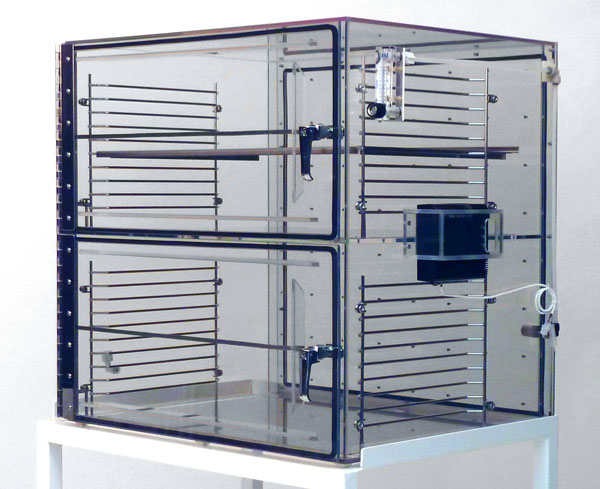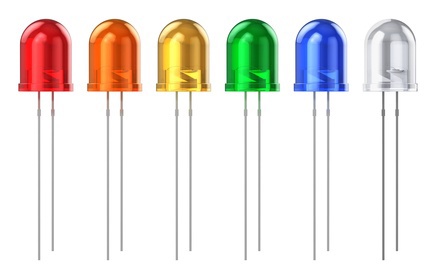TDI Glossary of Terms – The Technical Source!
TDI Glossary of Terms
Alkali
A chemical compound that neutralizes or effervesces with acids and turns litmus blue, typically a caustic or corrosive substance of this kind such as lime or soda.
Alloy
A metal made by combining two or more metallic elements, especially to give greater strength or resistance to corrosion.
Alternating Current
Current from a power source that changes polarity periodically.
Alternator (in Electronics)
A device that supplies alternating current.
American Wire Gauge (AWG)
A standard for wire sizes, with the smallest being designated as forty (40) and the largest as four aught (4/0)
Ammeter
An instrument used for measuring current.
Amorphous
Without a clearly defined shape or form, having no real or apparent crystalline form. In condensed matter physics and materials science, an amorphous or noncrystalline solid is a solid that lacks the long-range order characteristic of a crystal.
Ampacity
The current-carrying capacity of conductors in amperes.
Ampere (A) or Amp for Short
The unit of measure for current. A unit of electric current equal to a flow of one coulomb per second. Named for Andre Ampere.
Amperage (A)
The strength or amount of an electrical current in ampere.
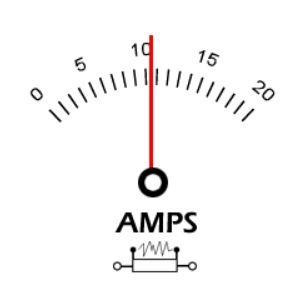
Ampere Hour (Ab)
Unit of measure for cell or battery capacity. An amp-hour is a unit of electric charge equal to the charge transferred by a steady current of one ampere flowing for one hour, or 3600 coulombs. Frequently used in measurements of electrochemical systems such as electroplating and electrical batteries.
Amplifier
An electronic circuit that boosts the voltage and/or the current level of a signal.
Analog
Generally refers to signals that have many discrete values versus digital binary signal that have only two states. Also, refers to the branch of electronics dealing with such signals and their circuits. The term linear is another term often used for such circuits or signals.
Analog-to-Digital Converter (A/D)
A circuit or device used to convert an analog signal to digital form.
AND Gate or Logic
Generates a logic 1 only if all of its two or more inputs are 1.
Apparent Power
The product of voltage times current in a circuit containing reactances and measured in volt-amps.
Armature
The moving part of a motor or generator.
Autotransformer
A power transformer having one continuous winding that is tapped.
Ballast
A device used to provide starting current for certain types of lamps (fluorescent).
Battery
A direct-current power source consisting of two or more cells.
Binary
In electronics, a number system that has two as its base; therefore any position only has two possible values, 0 or 1. A signal that has only two possible states at any instance.
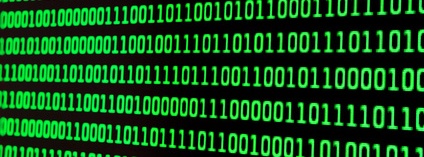
Bipolar Junction Transistor (BJT)
A transistor type having two PN junctions, configured as NPN or PNP may be used as an amplifier switch.
Bit
A single binary digit, can be either a 0 or a 1.
Brush
A conductive block used to make sliding contact with an armature.
Byte
A group of eight binary bits, commonly used to represent digital data.
Cable
A stranded conductor or group of individual conductors insulated from each other.
Capacitance
The ability of a system to store an electric charge, measured in farads (F).
Capacitive Reactance (Xc)
The opposition that a capacitor offers to alternating current. This opposition, in the form of a counter electromotive force (cemf), is expressed in ohms.
Capacitor
A device used to store an electric charge, consisting of one or more pairs of conductors separated by an insulator.

Cell
A device that transforms one form of energy into electrical energy. An example would be a chemical dry cell commonly used in flashlights (D, C, AA, AAA) and other electronic devices. These are often referred to as batteries.
Central Processing Unit (CPU)
The part of a computer in which operations are controlled and executed, performs the arithmetic, logic and control functions.
Circumference
The enclosing boundary of a curved geometric figure, especially a circle.
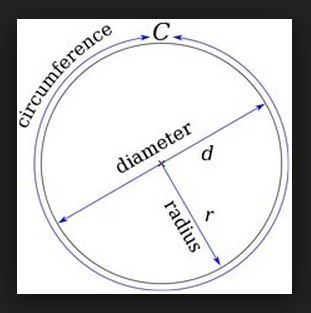
Circuit
An arrangement or connection of circuit devices and components to perform a specific objective. In the simplest form it would require an energy source, a load to transform the energy into the desired task, and conductors to connect the source to the load. In most applications a control device (switch) would be included and may also include a protective device. One common example of a simple circuit would be a flashlight.
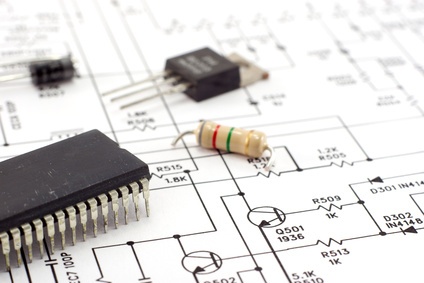
Circuit Breaker
A circuit protection device that opens the circuit automatically when an overload or short circuit occurs.
Class 0
DA Class 0 Definition for Manufacturers – Ted Dangelmayer Associates, LLC.
Cleanroom
An environment free from dust, airborne microbes, aerosol particles and chemical vapors. Used chiefly for the manufacture of electronic components and scientific research.
Closed Circuit
A circuit that provides a complete path for current.
Coil
A wound spiral of two or more turns of insulated wire, used to introduce inductance into a circuit, produce a magnetic field from current flow, or to respond to a changing magnetic field by producing a voltage or mechanical motion.
Components
In electronics, the general term to refer to a part or parts of a circuit board without reference to their specific names.
Commutator
A cylindrical arrangement of insulated metal bars connected to the armature coils of a direct-current electric motor or generator, providing an unidirectional current from the generator or a reversal of current into the coils of the motor.
Conductance (G)
The ability of a conductor to allow the flow of electrons, measured in Siemens (S). The reciprocal of resistance.
Conductive
Having the property of conducting something (especially heat or electricity).
Conductor
In a conductor, electric current can flow freely, in an insulator it cannot. Metals such as copper typify conductors while most non-metallic solids are said to be good insulators, having extremely high resistance to the flow of charge through them.
Conventional Current
A direction flow assignment that has current flowing from positive to negative.
Coulomb
The SI unit of electrical charge, equal to the quantity of electricity conveyed in one second by a current of one ampere.
Crystal
A natural or synthetic crystalline material having piezoelectric properties. As a transducer, used to convert dynamic pressures (vibrations) to ac electricity or change ac electricity into vibrations.
Current (I)
An electric current is a flow of electric charge. In electric circuits this charge is often carried by moving electrons in a wire. It can also be carried by ions in an electrolyte, or by both ions and electronics such as in a plasma.
Cycle
One complete wave of alternating voltage or current.
Desiccator
A sealable enclosure holding a drying agent or utilizing nitrogen/clean dry air for removing moisture from specimens and protecting them from water vapor and particles in the air.
Delrin
Type of polymer known as apolyoxymethylene or POM, also known as acetal, pholyacetal and polyformaldehyde which are forms of an engineering thermoplastic used in precision parts that require high stiffness, low friction and exceptional dimensional stability. Delrin material is a homopolymer, meaning that it has only one type of molecule whereas copolymers have more than one type of molecule. 99% of the time Delrin and acetal tweezers are interchangeable in electronics applications.
Diameter
A straight line passing from side to side through the center of a body or figure, especially a circle or sphere.

Dielectric
A nonconductor of electricity. An insulator that is capable of concentrating electronic fields.
Diode
A semiconductor device with two terminals, typically allowing the flow of current in one direction only, cathode to anode. A thermionic tube having two electrodes (an anode and a cathode). Also, a classification of semiconductor devices having only one junction. Examples include a rectifier, zener, varactor and tunnel diodes.

Direct Current (dc)
Current from a power source that continually flows in the same direction. An electrical source of constant polarity.
Duty Cycle
The ratio of pulse width to period, indicates the percentage of time a pulse is present during a cycle.
Electricity
The physical phenomena arising from the behavior of electrons and protons that is caused by the attraction of particles with opposite charges and repulsion of particles with the same charge. The physical science of such phenomena. Also, current used or regarded as a source of power.
Electric Energy
the energy carried by free electrons from a source to a load. Also, the potential energy of a stationary charge.
Electric Power
The rate at which energy is consumed in a circuit or load. Measured in watts (W).
Electrodes
A conductor through which electricity enters or leaves an object, substance or region.
Electrolyte
A chemical solution used in cells and some capacitors to produce an electrically conductive medium.
Electrolytic Capacity
A type of capacitor that uses an electrolyte (an ionic conducting liquid) as one of its plates to achieve a larger capacitance per unit volume than other types.
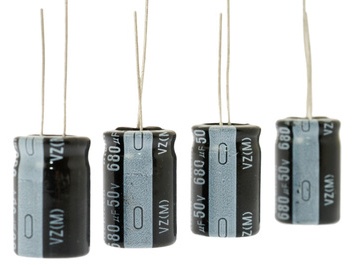
Electromagnetic
Of or relating to the interrelation of electric currents or fields and magnetic fields.
Electromagnetic Spectrum
The range of wavelengths or frequencies over which electromagnetic radiation extends.
Electromagnet
A device that produces a magnetic field as the result of current flow through a coil of wire.
Electromechanical
A classification of actions or devices whereby a mechanical action is caused by the forces of attraction or repulsion created when current flow generates magnetic fields (electromagnetic).
Electromotive Force (emf)
The force or electrical pressure that has the potential to cause electron flow in a circuit. Also called voltage, potential difference or difference of potential. Measured in volts (V).
Electroplating
The coating of a metal object with a thin layer of a different metal by means of electrolysis.
Electrostatic Discharge (ESD)
Electrostatic discharge is the sudden flow of electricity between two electrically charged objects caused by contact, an electrical short, or dielectric breakdown. A buildup of electricity can be caused by tribocharging or by electrostatic induction.

Example of “ESD Safe” Symbol
Electrostatic Field
An electric field produced by stationary charges.
Equivalent Series Resistance (ESR)
The resistive component of a capacitor’s equivalent circuit. A capacitor can be modeled as an idea capacitor in series with a resistor and an inductor. The resistor’s value is the ESR.
Ergonomic(s)
The science concerned with designing safe and comfortable products for humans. Products intended to provide optimum comfort and to avoid injury and reduce stress.
Farad (F)
The basic unit of measurement for capacitance. One farad is that capacitance that will store one coulomb of charge when the charging force is one volt. Since the farad is a very large unit, capacitance will more commonly be expressed as microfarad (uF) or picofarad (pF) values. Named for Michael Faraday, the British physicist and chemist who discovered electromagnetic induction and proposed the field theory later developed by Maxwell and Einstein.
Field Effect Transistor (FET)
A transistor type that uses voltage to control current through the device. See JFET and MOSFET.
Filter
A circuit designed to pass a specific frequency range while rejecting all others.
Fluorescence
The visible or invisible radiation emitted by certain substances as a result of incident radiation of a shorter wavelength such as x-rays or ultraviolet light. The property of absorbing light of short wavelength and emitting light of longer.
Flux
Generally refers to a magnetic line of force but may also describe an electric line of force.
In soldering: a chemical cleaning agent, flowing agent or purifying agent.
Frequency
The rate at which a vibration occurs that constitutes a wave, either in a material (as in sound waves) or in an electromagnetic field (as in radio waves and light) usually measured per second.
Fuse
A protective device designed to interrupt current flow (open) through a circuit when current exceeds a rated value.
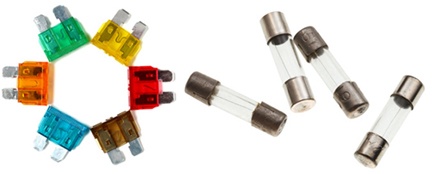
Gamma-Ray
Penetrating electromagnetic radiation of a kind arising from the radioactive decay of atomic nuclei. Gamma-rays have the smallest wavelengths and the most energy of any other wave in the electromagnetic spectrum. These waves are generated by radioactive atoms and in nuclear explosions. Gamma-rays can kill living cells, a fact which medicine uses to it’s advantage, using gamma-rays to kill cancerous cells.
Gamma-rays travel to us across vast distances of the universe, only to be absorbed by Earth’s atmosphere. Different wavelengths of light penetrate Earth’s atmosphere to different depths. Instruments aboard high-altitude balloons and satellites provide our only view the gamma-ray sky.
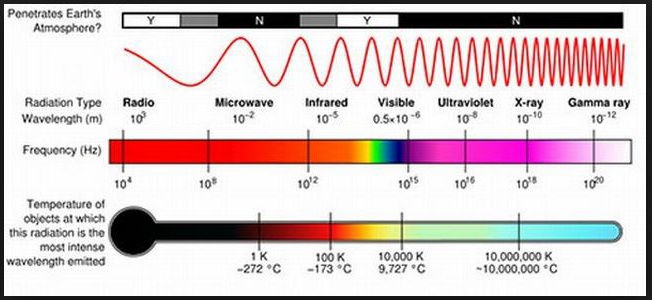
Gate
A logic circuit performing a specific logic function. See AND, OR, NAND, OR and NOT.
Gauss (G)
A unit of measurement for magnetic field, equal to one ten-thousandth of a tesla.
Generator
A device that converts mechanical energy to electrical energy.
Ground
The common return path for current in an electrical circuit. Serves as a reference point for measuring all other potentials in a circuit. Generally assumed to be at zero potential with respect to the earth. Other than earth references may be used such as the chassis of an automobile (chassis ground) or some arbitrary point in a circuit (circuit ground) like the negative side of a power source.
Hard Drive
A high capacity, self-contained storage device containing a read-write mechanism plus one or more hard disks inside a sealed unit. Also called a hard disk drive.
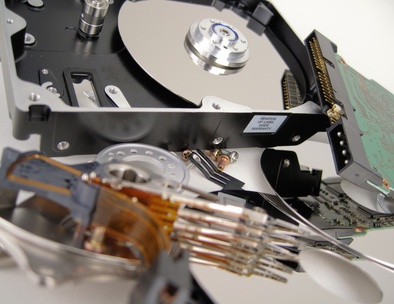
Heat Sink
A device attached to a component to aid in the dissipation of heat.
Henry (H)
The unit of inductance in which an induced electromotive force of one volt is produced when the current is varied at the rate of one ampere per second. Named for Joseph Henry, an American physicist who performed extensive studies of electromagnetic phenomena.
Hertz (Hz)
A unit of frequency equal to one cycle per second. Named for Heinrich Hertz, a German physicist who was first to produce radio waves artificially.
High Efficiency Particulate Air (HEPA)
A type of filter. Filters meeting the HEPA standard have many applications, including use in medical facilities, automobiles, cleanrooms and homes. The filter must satisfy certain standards of efficiency such as those set by the United States Department of Energy (DOE).
Impedance (Z)
The effective Resistance of an electric circuit or component to alternating current, arising from the combined effects of ohmic resistance and reactance.
Incandescent
Emitting light as a result of being heated.
Inductance (L)
In electronics inductance is the property of a conductor by which a change in current in the conductor induces (creates) a voltage in both the conductor itself and in any nearby conductors. It is customary to use the symbol (L) for inductance, in honor of physicist Heinrich Lenz.
Inductive Reactance (XL)
The opposition that an inductor offers to alternating current. This opposition, in the form of a counter electromotive force (cemf), is expressed in ohms.
Inductor
An electrical device designed to provide a specific amount of inductance; measure in henrys (H).
Infrared
(Of electromagnetic radiation) having a wavelength just greater than that of the red end of the visible light spectrum but less than that of microwaves. Infrared radiation has a wavelength from about 800nm to 1nm, and is emitted particularly by heated objects.
Infrared light lies between the visible and microwave portions of the electromagnetic spectrum. In addition, it has a range of wavelengths, just like visible light has wavelengths that range form red light to violet. “Near infrared” light is closest in wavelength to visible light and “far infrared” is closer to the microwave region of the spectrum. The longer, far infrared wavelengths are about the size of a pin head and the shorter, near infrared ones are the size of cells.
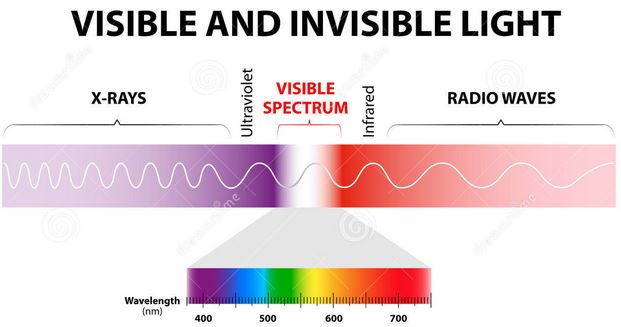
Insulation
Nonconductive material used to cover wires and components to prevent shock and short circuits.
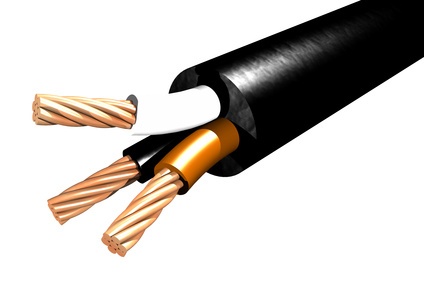
Insulator
A material that has a high resistance to current flow.
Insulative
The property of “insulation” refers to a material’s ability to store as opposed to conduct. An insulator is the opposite of a conductor.
Integrated Circuit (IC)
An electronic circuit formed on a small piece of semiconducting material, performing the same function as a larger circuit made from discrete components.
Internal Resistance
The resistance within a power source.
International System of Units (SI)
The modern form of the metric system and it is the world’s most widely used system of measurement, used in both everyday commerce and science. It comprises a coherent system of units of measurement built around seven base units, 22 named and an indeterminate number of unnamed coherent derived units, and a set of prefixes that act as decimal-based multipliers. It is part of the International System of Quantities.
Inverter
A logic device (NOT function) whose output is always opposite the input. Also refers to a device that converts dc to ac.
Joule
The basic unit of electrical, mechanical, and thermal energy. As a unit of electrical energy. As a unit of electrical energy it is equal to the energy carried by 1 coulomb of charge being propelled by an electromotive force of 1 volt. Named for James Joule, the British physicist who established the mechanical theory of heat and discovered the first law of thermodynamics.
Junction Field Effect Transistor (JFET)
A transistor type made by diffusing a gate region into a channel region. Voltage applied to the gate controls current in the channel by either depleting or enhancing the channel.
Kilo (k)
Metric prefix for units of measurement equal to thousands (1000 or 103). As an example: 1 kilohertz (kHz) equals 1000hz.
Kilowatt-hour (kWh)
Unit of energy consumption equal to 1000 watt-hours or the energy consumed at the rate of one kilowatt (kW) for a time of one hour. Equivalent to 3,600,000 joules. Generally used to specify a large energy consumption over a specific time interval. Residential energy is usually priced at the number of kilowatt-hours used for a month.
Lamp
A light producing device consisting of a filament placed in a vacuum.
Laser (Light Amplified by Stimulated Emission of Radiation)
A device that generates an intense beam of coherent monochromatic light (or other electromagnetic radiation) by stimulated emission of photons from excited atoms or molecules. Lasers are used in drilling and cutting, alignment and guidance, and in surgery; the optical properties are exploited in holography, reading bar codes, and in recording and playing compact discs.

Law of Magnetic Poles
Like poles repel, unlike poles attract.
Lenz’s Law
Basic law of electromagnetic induction which states that an induced voltage will have a polarity that opposes the current change that produced it.
Liquid Crystal Display (LCD)
A form of visual display used in electronic devices in which a layer of liquid crystal is sandwiched between two transparent electrodes. The application of an electric current to a small area of the layer alters the alignment of its molecules, which affects its reflectivity or its transmission of polarized light and makes it opaque.
Light Emitting Diode (LED)
Two-lead semiconductor light source. It is a basic pn-junction diode, which emits light when activated.
Linear
A circuit or component where the output is a straight line (direct proportion) function of the input.
Load
A device or apparatus that uses the energy of a circuit to perform work. May also refer to the power used by a device, machine, or combination of many.
Luminescence
Emission of light by substance not resulting from heat; it is thus a form of cold body radiation. It can be caused by chemical reactions, electrical energy, subatomic motions, or stress on a crystal.
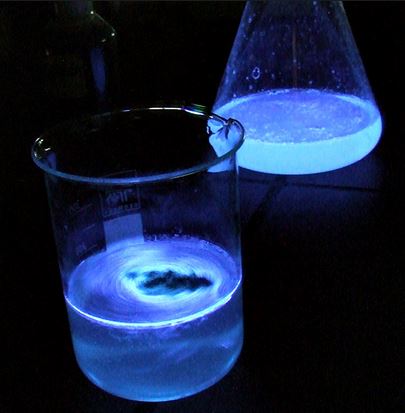
Magnet
An object which produces a magnetic field in the surrounding spaces.
Magnetic Field
The detectable magnetic flux issuing from a magnet or electromagnet.
Magnetic Poles
The two points of strongest concentration of magnetic flux around a magnet or electromagnet. By assignment the flux leaves the north pole and returns to the south pole.
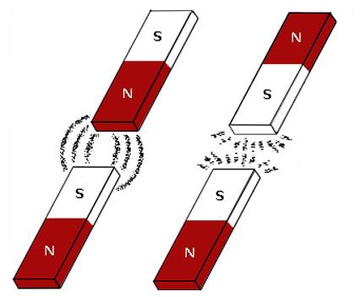
Magnetic Saturation
The point where an increase in magnetic force produces no further magnetic effect in a magnetic material. The material can have no further increase in flux. Iron, nickel, cobalt and their alloys are considered to be magnetic materials.
Magnetism
The physical phenomena exhibited by magnets and electric current flow that is represented by lines of force.
Mega (M)
Prefix for units of measurement equal to millions (1,000,000 or 106).
Memory
The part of a computing device where data and instructions are stored (RAM and ROM).
Metal Oxide Field-Effect Transistor (MOSFET)
Also called insulated gate field effect transistor (IGFET). A transistor type that uses an electric field to contain conduction.
Micro (u)
Prefix for units of measurement equal to millionths (1/1,000,000 or 10-6).
Microprocessor
A CPU that is manufactured on a single integrated-circuit (IC) chip.
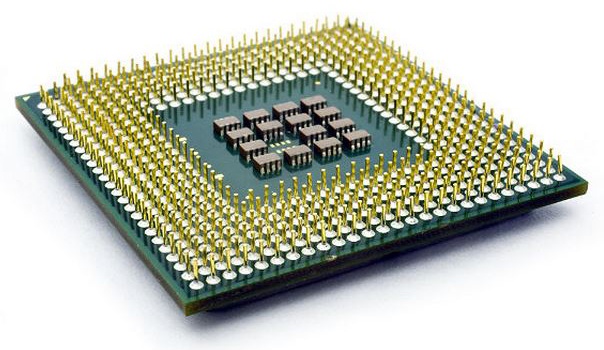
Microwaves
An electromagnetic wave with a wavelength in the range of 0.001-0.3m. shorter than that of normal radio waves but longer than those of infrared radiation. Microwaves are used in radar, in communications, and for heating in microwave ovens and in various industrial processes.
Microwaves have wavelengths that can be measured in centimeters. The longer microwaves, those closer to a foot in length, are the waves which heat food in the microwave oven. Microwaves are good for transmitting information from one place to another because microwave energy can penetrate haze, light rain and snow, clouds and smoke.
Shorter microwaves are used in remote sensing. These microwaves are used for radar like the Doppler radar used in weather forecasts. Microwaves, used for radar, are just a few inches long.
Milli (m)
Prefix for units of measurement equal to thousandths (1/1,000 or 10-3).
Milliamp / Milliampere (mAMP)
One thousandth of an ampere, a measure for small electric currents.
Milliamps Hour (mAh)
Important because it is the easiest way to distinguish the strength or capacity of a battery. The higher the mAh, the longer the battery will last. Batteries with different mAh ratings are interchangeable.
Modem
Abbreviation for modulator-demodulator. A device that converts data from one form into another, as from one form usable in data processing to another form usable in telephonic transmission.
Multimeter
An instrument that can measure current, voltage, and resistance on various ranges. Many multimeters can measure other circuit values such as frequency and capacitance. Many have digital (DMM) or analog displays (VOM).
NAND Gate or Logic
Stands for NOT-AND. Gives an inverted output of AND logic.
Negative
For sources, implies the terminal that has an excess of electrons. Also, can imply the polarity of a point in a circuit in respect to some other point.
Nonlinear
A circuit or component whose output versus input graph is not a straight line.
NOR Gate or Logic
Stands for NOR-OR. Gives inverted output of OR logic.
North-Seeking Pole
That pole of a magnet which points to the earth’s north pole when free to turn.
Norton’s Theorem
A method of reducing a complex network of bilateral (conducts equally well in both directions) components to one current source and one shunt resistance across load terminals.
Ohms (S)
The ohm (symbol Ω) is the SI derived unit of electrical resistance, named after German physicist Georg Simon Ohm. Ohm’s Law deals with the relationship between voltage and current in an ideal conductor is proportional to the current through it. The constant of proportionality is called the “resistance”, R.
Ohm’s Law
Very basic circuit law that defines the relationship between current, voltage, and resistance in DC circuit. Ohm’s law states that current is directly proportional to resistance (I=V/R). The other forms of the formula are V=IR and R=V/I.
Ohmmeter
An instrument measuring resistance.
Operational Amplifier (Op Amp)
A highly stable direct coupled amplifier resistant to oscillation. May be packaged in an IC format.
Organic Light Emitting Diode (OLED)
A light emitting diode containing thin flexible sheets of an organic electroluminescent material, used for visual displays.
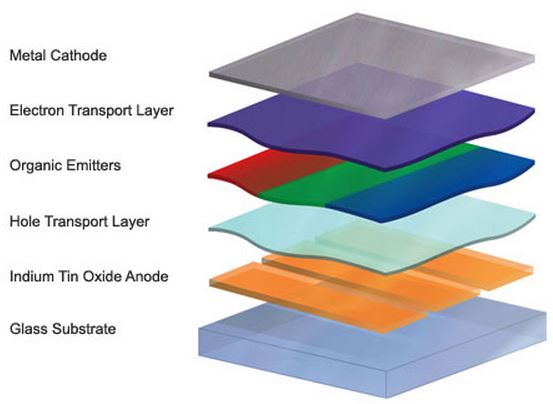
OR Gate or Logic
Generates a logic 1 if any one of its two or more inputs are 1.
Oscillator
A circuit that converts dc power into ac signals with constant frequency. Also, an instrument that generates ac signals whose frequency and amplitude can be varied. These are also referred to as signal generators.
Oscilloscope
An instrument that displays a plot of voltage over time. Often referred to as a scope.
Overload
A load in excess of the design limit for a circuit.
Parallel Circuit
A circuit with two or more loads (or sources) connected such that all have the same voltage but different currents. Each load can be operated independent of the others. Parallel sources should have equal voltage ratings.
Period
The time in seconds that is required to complete one cycle of waveform
Permeability
The ability of a magnetic material to conduct magnetic lines of force.
Phase
A time relationship between two electrical quantities.
Phosphorus
The chemical element of atomic number 15, a poisonous, combustible nonmetal that exists in two common allotropic forms, white phosphorus, a yellowish waxy solid that ignites spontaneously in the aire and glows in the dark, and red phosphorous, a less reactive form used in making matches.

Photovoltaics (PV)
A method of generating electrical power by converting sunlight into direct current electricity using semiconducting materials that exhibit the photovoltaic effect. A photovoltaic system employs solar panels composed of a number of solar cells to supply usable solar power.
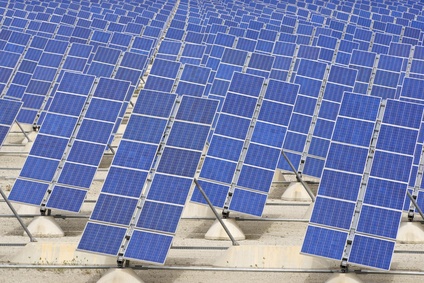
Photovoltaic Effect
This creation of voltage or electrical current in a material upon exposure to light.
Piezoelectricity
The electric charge that accumulates in certain solid materials (such as crystals, certain ceramics, and biological matter such as bone, DNA and various proteins in response to applied mechanical stress. The word piezoelectricity means electricity resulting from pressure. It is derived from the Greek peizo or piezein, which means to squeeze or press, and electric or electron, which means amber, an ancient source of electric charge. Piezoelectricity was discovered in 1880 by French physicists Jacques and Pierre Curie.
Plasma
An ionized gas consisting of positive ions and free electrons in proportions resulting in more or less no overall electric charge, typically at low pressures (as in the upper atmosphere and in fluorescent lamps) or at very high temperatures (as in stars and nuclear fusion reactors).
Plasma is used in the electronics industry for a wide variety of applications ranging from adhesion promotion of encapsulates and adhesives, to enhancing the release properties of optical disc master stampers. The power of plasma to precision clean surfaces prior to metallization and solid state bonding has been recognized by industries such as circuit board fabrication where it is used to clean drill smear prior to metallization.
Polarity
For electrical charge, the indication of a charge as either positive (+) or negative (-). Voltage at a point would be indicated as being either positive or negative with respect to some other point. For magnetic poles, the indication as either north or south.
Polarized
Cause something to acquire polarity, or restrict the vibrations of (a transverse wave, especially light) wholly or partially to one direction.
Positive
For sources, implies the terminal that has a deficiency of free electrons. Alos, can imply the polarity of a point in a circuit in respect to some other point.
Potentiometer
A three-terminal resistor with an adjustable center connection generally used to control voltage; widely used for volume control in radio and television receivers. In this sense, also called a Pot.
Power
The rate at which energy is consumed. In electronics it refers to the consumption of electrical energy in joules over time; measured in watts.
Power Factor (PF)
The ratio of true power to the apparent power in a circuit, especially those that are not purely resistive. It is also equal to the cosine of the phase angle for the circuit.
Power Supply
Generally, a device or circuit used to convert alternating current (ac) of specific voltage to one or more direct current (dc) values of specific voltage and current ratings. May have variable voltage ability in some instances. May also refer to a device that converts a specific dc value to another dc value (dc to dc converter).
Primary Cell
A device that uses up its ingredients to convert chemical energy to electrical energy and therefore cannot be recharged.
Primary Winding
The input winding to a transformer.
Printed Circuit Board (PCB)
An electronic circuit consisting of thin strips of a conducting material such as copper, which have been etched from a layer fixed to a flat insulating sheet called a printed circuit board, and to which integrated circuits and other components are attached.
Polymer
A substance that has a molecular structure consisting chiefly or entirely of a large number of similar units bonded together, e.g. many synthetic organic materials used as plastics and resins.
PPM
Parts Per Million
Radio Waves
An electromagnetic wave of a frequency between about 104 and 1011 or 1012 Hz, as used for long distance communication.
Radio waves have the longest wavelengths in the electromagnetic spectrum. These waves can be longer than a football field or as short as a football. Radio waves do more than just bring music to your radio, they also carry signals for your television and cell phones.
Radius
A straight line from the center to the circumference of a circle or sphere.

Random Access Memory (RAM)
A read/write memory that allows data storage (write) and data retrieval (read) to any location in any order. Considered to be temporary (volatile) in that the contents are lost if power is turned off.
Reactance
Opposition to current offered by capacitors and inductors in the form of a counter-electromotive force (cemf), but expressed in ohms. Reactance does not consume power but gives the appearance that it does.
Read Only Memory (ROM)
A classification of non-volatile memory that has its contents built in a time of manufacture and which cannot be changed and cannot be lost if power is turned off. Variations include Programmable (PROM) and Erasable Programmable (EPROM) which has provision for user programming.
Rectifier
A solid state device that converts alternating current to pulse direct current.
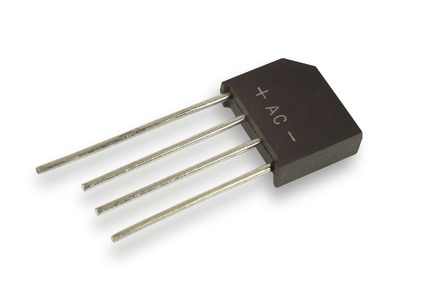
Relay
An electromechanical device that uses electromagnetism to mechanically switch electrical circuits. The output contacts are designed to be either normally open (NO) or normally closed (NC). Some relays provide both arrangements and multiple switches.
Resistance (R)
Electrical resistance is the repulsion of a current within a circuit. It explains the relationship between voltage (amount of electrical pressure) and current (flow of electricity). Resistance, discovered by Georg Simon Ohm in 1827, is the ratio between voltage and current.
Resistor
A device having a designed resistance to the passage of an electric current.
Resonance
A circuit condition when the inductive reactance (X1) equals the capacitive reactance (Xc). A resonant circuit is one that has been tuned to that condition and resonant frequency is that frequency that resonance occurs in a circuit and provides a maximum output for one of its circuit variables.
Rheostat
A two-terminal resistor with an adjustable center connection and one end connection generally used to control current.
Ripple
The small amount of ac voltage that still remains in the output of a dc power supply.
Rockwell Hardness
The Rockwell Scale is a hardness scale based on indentation hardness of a material. The Rockwell test determines the hardness of a material by measuring the depth of penetration of an indenter under a large load compared to the penetration made by a preload.
Root Mean Square (RMS)
The value of an ac sine wave that indicates its equivalent dc value for producing heat. Also called the effective value. It is equal to 70.7% of the maximum value (peak value) for the waveform.
SCFH
Standard Cubic Feet per Hour.
Schematic or Schematic Diagram
A drawing depicting how the components are connected using standardized symbols.
Secondary Cell
A device whose ingredients convert chemical energy to electrical energy but can be recharged.
Secondary Winding
The output winding of a transformer or one of several output windings.
Series Circuit
A circuit arrangement of two or more loads (or sources) connected end-to-end only allowing for one current path. Therefore, all components have the same current but can have different voltage. An open at any point or in any component interrupts current flow for all.
Semiconductor
A solid crystalline substance such as germanium or silicon, that has a conductivity between that of an insulator and that of most metals, either due to the addition of an impurity or because of temperature effects. These materials are the foundation material for diodes and transistors. Devices made of semiconductors, notable silicon, are essential components of electronic circuits.
![]()
Short Circuit
An undesirable low resistance path between two points in a circuit.
Siemen (S)
The unit of measurement for conductance. Named for Ernst Werner von Siemens, a German engineer who made notable improvements to telegraphic and electrical apparatus.
Silicon-Controlled Rectifier (SCR)
See “thyristor”.
Sine Wave
A waveform whose instantaneous amplitude is a function of the sine of the angle of rotation for that instant. The output waveform produced by rotating a loop in a magnetic field, and the output of an oscillator generating a pure frequency.
Solar Cell
A solar cell, or photovoltaic cell, is an electrical device that converts the energy of light directly into electricity by the photovoltaic effect. It is a form of photoelectric cell, defined as a device whose electrical characteristics, such as current, voltage or resistance, vary when exposed to light.
Solder
Any of various fusible alloys, usually tin and lead, used to join metallic parts. In electronics used to connect components to PC boards or to aid the conductivity and mechanical junctions of connections and splices.
Soldering
To join with solder – a low melting alloy.
Solenoid
Electromechanical device that uses electromagnetism to produce a mechanical operation.
Solid State
Solid state electronics are those circuits or devices built entirely from solid materials and in which the electrons, or other charge carriers, are confined entirely within the solid material. The term is often used to contrast with earlier technologies of vacuum and gas-discharge tube devices and it is also conventional to exclude electro-mechanical devices (relays, switches, hard drive & other devices with moving parts) from the solid state.
While solid state can include crystalline, polycrystalline and amorphous solids and refer to electrical conductors, insulators and semiconductors, the building material is most often a crystalline semiconductor. Common solid state devices include transistors, microprocessor chips, and RAM.
Prior to the use of solid state devices, electricity passed through the various elements inside of a heated vacuum tube. Solid state electronic devices have replaced the vacuum tubes in just about all electronic devices. Vacuum tubes are the opposite of solid state because of the fact that tubes break, burn out, etc. Vacuum tubes are, however, still used in the transmitters of radio stations you listen to and many guitar amplifiers.
Source
General term to describe devices that provide electrical energy at their output terminals to operate a circuit. Examples include batteries, solar cells, generators and alternators or power supplies.
Static Dissipative
Capable of dissipating static electric charge at an acceptable range. Static dissipative materials will not generate a potential hazardous charge while also grounding many potentially hazardous charges. Commonly used for highly sensitive electronics, static dissipative materials are certified to meet electronic industry standards.
Static Electricity
A stationary electrical charge on an object, typically produced by friction, that causes sparks or crackling to the attraction of particles.
Stator
The electromagnetic part of a motor or generator that does not rotate.
Stepper Motor
A motor type driven with diagonal codes that moves in discrete angular increments with each code change.
Superposition Theorem
A method for analyzing a complex network of bilateral (conducts equally well in both directions) components having multiple sources.
Surface Mount Device
See below SMT
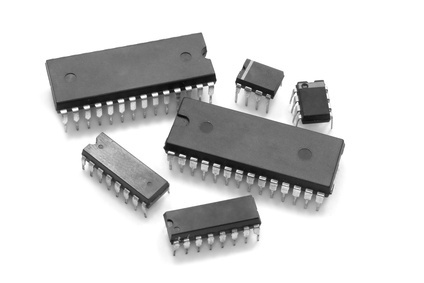
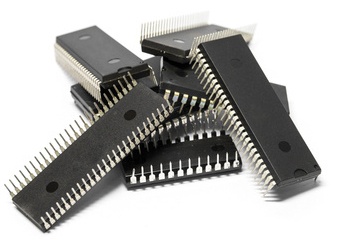
Surface Mount Technology
A method for producing circuits in which the components are mounted or placed directly onto the surface of printed circuit boards (PCBs). An electronic device so made is called a surface-mount device (SMD).
Surface Tension
The tension of the surface film of a liquid caused by the attraction of the particles in the surface layer by the bulk of the liquid, which tends to minimize surface area.
Surge
A very rapid increase of current or voltage.
Substrate
A substance or layer that underlies something, or on which some process occurs in particular.
Switch
A device used to open (turn off) or close (turn on) electrical circuits that can be designed to be operated by numerous actions such as toggle, slide or push button actions. Standard configurations include SPST, SPDT, DPST and DPDT.
Teflon®
A tough synthetic resin made by polymerizing tetrafluoroethylene, used to coat and to make seals and bearings. Teflon® is a registered trademark of and brand name of DuPont, and is used on a wide range of products.
Terminal
A connection point for electrical components or conductors.
Thermistor
A resistor made of semiconductor material having resistance that varies rapidly and predictably with temperature. Used as a temperature sensor, the resistance varies inversely with temperature.
Thermocouple
A thermoelectric device used to measure temperatures accurately, consisting of two dissimilar metals joined so that a potential difference is generated that is representative of the temperature of the junction.
Thevenin’s Theorem
A method of reducing a complex network of bilateral (conducts equally well in both directions) components to one voltage source and one resistor in series with the load terminals.
Thin Film Transistor (TFT)
A special kind of field-effect transistor made by depositing thin films of an active semiconductor layer as well as the dielectric layer and metallic contacts over a supporting (but non-conducting) substrate.
Thyristor
A broad classification of semiconductor devices used as electronics switches. Examples include diacs, SRCs, and triacs.
Tolerance
Used to describe the allowable variance in a measurement or a components value.
Transistor
A device used to convert input energy of one form into output energy of another.
Transformer
A device used to transfer electric energy from one circuit to another, especially a pair of multiply wound, inductively couple wire coils that effect such a transfer with a change in voltage, current, phase or other electric characteristic. Generally used to convert one voltage-current relationship to another. Step-up transformer, increase the voltage while decreasing the current, and step-down transformer decreases the voltage while increasing the current.
Transistor
Small electronic semiconductor device with three connections of amplification in addition to rectification. Used to amplify and switch electronic signals and electrical power.

Tribocharge
The triboelectric effect is a type of contact electrification in which certain materials become electrically charged after they come into contact with another different material through friction. Rubbing glass with fur, a comb through the hair, can build up triboelectricity.
True Power
The actual power consumed by a circuit; measured in watts.
Ultraviolet (UV)
(Of electromagnetic radiation) having a wavelength shorter than that of the violet end of the visible spectrum, but longer than that of x-rays. Though these waves are invisible to the human eye, some insects can see them.
Scientists have divided the ultraviolet part of the spectrum into 3 regions: near ultraviolet, far ultraviolet and extreme ultraviolet. The 3 regions are distinguished by how energetic the ultraviolet radiation is, and by the wavelength.
Near ultraviolet (NUV) is the light closest to optical or visible light. Extreme ultraviolet (EUV) is closest to x-rays, and is the most energetic of the three. Far ultraviolet (FUV) lies between the near and extreme regions, and is the least explored.

Volt (V)
The unit by which an electromotive force or voltage is measured. Named for Alessandro Volta, the Italian physicist who invented the first electric battery (1800).
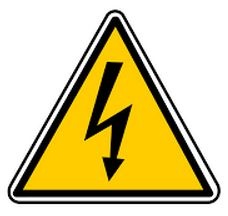
Voltage (V)
An electromotive force or potential difference expressed in volts.
Voltage Divider
A series circuit that divides voltage.
Voltage Drop
The difference in potential between two points caused by current flow through a component.
Voltmeter
An instrument used to measure voltage.
Wafer
A thin slice of semiconductor material, such as silicon crystal, used in the fabrication of integrated circuits and other micro devices.

Watt (W)
The unit of measure for power, equivalent to one joule per second, corresponding to the power of an electric circuit in which the potential difference is one volt and current one ampere. Named for James Watt the British engineer and inventor.

Wattage (W)
A measure of electrical power expressed in watts.
Watt Hour
A measure of electrical energy equivalent to a power consumption of one watt for one hour.
Wavelength
The distance between successive crests of a wave, especially points in a sound wave or electromagnetic wave.

Wheatstone Bridge
An instrument or a circuit consisting of four resistors or their equivalent in a series parallel arrangement, used to determine the value of an unknown resistance when the other three resistances are known.
Wiring Diagram
A graphic representation of how circuit components are connected
X-Rays
An electromagnetic wave of high energy and very short wavelength, which is able to pass through many materials opaque to light.
As the wavelengths of light decrease, they increase in energy. X-rays have smaller wavelengths and therefore higher energy than ultraviolet waves. We usually talk about x-rays in terms of their energy rather than wavelength. This is partially because x-rays have very small wavelengths. It is also because x-ray light tends to act more like a particle than a wave. X-ray detectors collect actual photons of x-ray light – which is very different from the radio telescopes that have large dishes designed to focus radio waves.
In 1895, X-rays were first observed and documented by Wilhelm Conrad Rontgen, a German scientist who found them by accident when experimenting with vacuum tubes.
Zener Diode
A semiconductor device designed to operate at a fixed voltage as a voltage regulator.
Zirconia
Zirconium dioxide, a white solid used in ceramic glazes and refractory coatings and as a synthetic substitute for diamonds in jewelry. Zirconium is very resistant to corrosion by many common acids and alkalis. It is therefore used extensively by the chemical industry where corrosive agents are employed.

